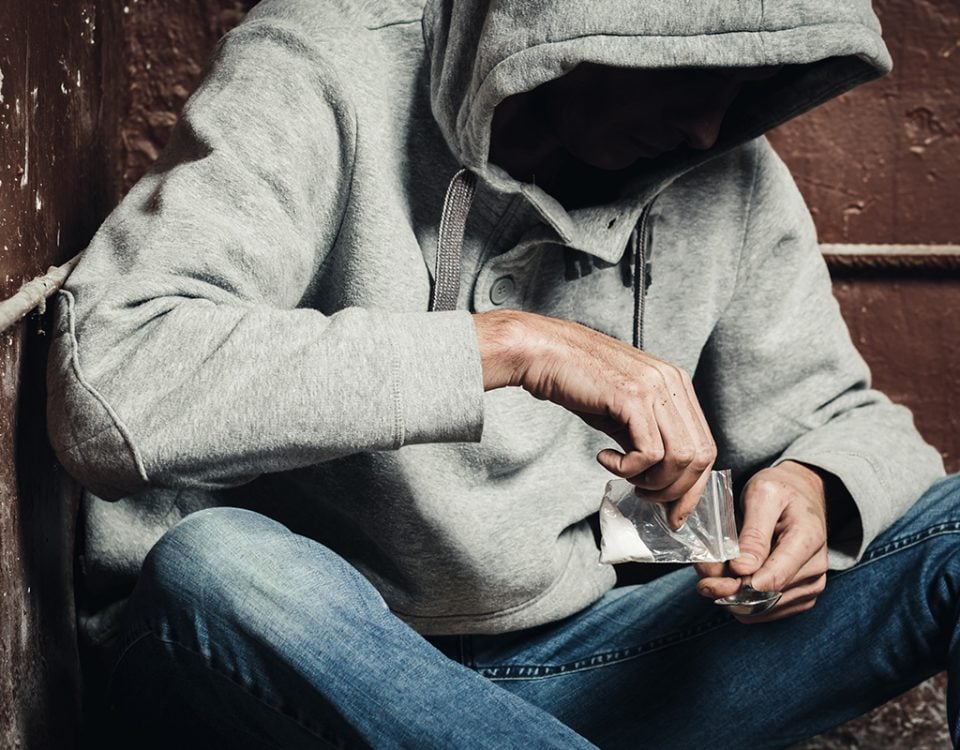Opioids are prescription drugs that are normally used to treat severe or chronic pain.
There are various kinds of opioids such as fentanyl, morphine, and heroin. These drugs work by attaching themselves to the opioid receptors in the brain, offering pain relief while producing feelings of pleasure and euphoria. These side effects make opioids highly addictive, so much so that the opioid crisis in Delaware isn’t unique; the opioid crisis across the United States has been going on since the late 1990s. Between 1999 and 2018, nearly 450,000 Americans died from an opioid-related overdose.1
Unfortunately, a new kind of opioid has emerged. Our addiction treatment center in Delaware is well aware of the dangers of the krokodil drug and is offering some insight on this cheaper alternative to heroin.
What Is the Krokodil Drug?
The drug krokodil is an injectable version of morphine, also referred to as a desomorphine that was named after the Russian word for crocodile – krokodil. It made its way into the Russian drug market in the early 2000s. Krokodil has become a cheaper alternative to heroin and other opioids that may be more difficult for addicts to get their hands on. Desomorphine was originally used to treat pain caused by trauma in the early 1990s because it was more potent and fast-acting than morphine. Unfortunately, krokodil often contains toxic additives like hydrochloric acid, red phosphorus, iodine, gasoline, and paint thinner.2 Nowadays, the Drug Enforcement Administration (DEA) classifies desomorphine as a Schedule I substance because it has a high potential for abuse and lacks any acceptable medical use.3
Because krokodil is a desomorphine, krokodil drug abuse can quickly lead to addiction. Like many other opioids, krokodil works quickly to alleviate pain and produce feelings of euphoria. These side effects are what people become addicted to. At Banyan Delaware, we know the dangers of krokodil and we offer an effective medically monitored detox that can help individuals with a krokodil addiction begin their recovery journey.
Questions about our Facilities or Programs?
Our admissions coordinators are available 24/7 to answer any questions you may have as you consider whether treatment at Banyan is right for you or your loved one.
The Krokodil Drug Effects
The Russian drug krokodil got its name from its side effects, which include scaly green and black skin that develops at the injection sites. But these are only a few of the many dangers of the krokodil drug.
Skin Necrosis
Skin necrosis occurs when the skin cells begin to die from lack of blood supply or toxicity. A severe form of cellulitis occurs, which is a bacterial infection on and under the skin, causing the infected skin and tissues to die. A person with this condition may experience swelling, pain, greenish or black scaling around the injection site, and necrotic ulcers. Skin necrosis can occur after using the krokodil drug even once.
Deterioration of Muscles and Cartilage
The dangers of krokodil also include muscle and cartilage damage, which can result from krokodil-induced skin necrosis. Bacteria are able to enter through the ulcers, spreading into the muscles and cartilage, deteriorating them to the point where underlying bone is revealed. Despite these disturbing physical side effects, people with a krokodil addiction are often unable to quit on their own. Because krokodil addiction is a chronic disease, residential addiction treatment is usually required to help addicts get sober.
Bone Damage
In addition to skin damage, the krokodil drug is also known for causing bone damage. The iodine and red phosphorus in krokodil are believed to break down cartilage and deteriorate bone health. Bone-related conditions like atypical jaw osteomyelitis and necrosis have been reported in patients who use injectable drugs that contain red phosphorus, like krokodil.2
Damage to Blood Vessels
Krokodil can also cause damage to the blood vessels, leading to gangrene and thrombophlebitis. Thrombophlebitis causes inflammation and swelling in the veins, eventually forming a blood clot.
As a cheaper desomorphine, many opioid addicts have turned to krokodil as a more affordable alternative. Krokodil is a highly potent, addictive, and dangerous drug that should be avoided at all costs.
Getting into treatment is easy with our free insurance verification
"*" indicates required fields
If you or a loved one is battling a drug or alcohol addiction, call Banyan Treatment Centers Delaware today at 888-280-4763 to learn more about our levels of care.









